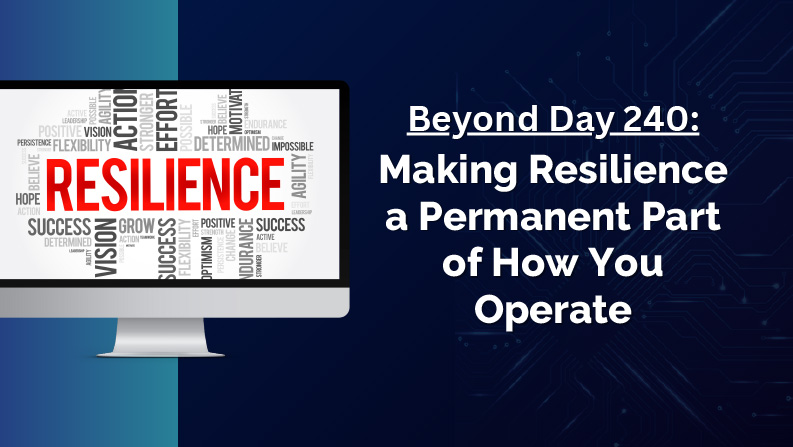By now, you’ve built the plan.
You’ve run drills.
You’ve rotated ownership.
You’ve even built in routines to keep things from slipping through the cracks.
But the final stretch of your first year is where resilience either fades—or sticks.
This isn’t about adding more complexity. It’s about reinforcing what works and embedding it into how your team operates every quarter.
Here’s how to finish the first year strong.
Days 241–270: Tune the System
Audit What You’ve Built
Don’t assume everything you’ve launched is still running clean. Audit your:
- Fallback plans—are they still tied to the right systems and owners?
- Drill history—did you meet your cadence? What were the takeaways?
- Scorecard—what’s still red or yellow?
Deliverable: Internal “Resilience Tune-Up” doc: 1-page summary of what’s working and what’s not.
Align With Business Priorities
Your resilience activities need to evolve with the business.
Ask:
- What new systems have been added?
- What strategic priorities (M&A, expansion, new compliance pressures) change your fallback focus?
- What staffing shifts affect ownership?
Deliverable: 30-minute quarterly sync with leadership to realign risk and response priorities.
Days 271–300: Reinforce What’s Working
Update Your Drill Playbook
By now, you’ve likely run 2+ drills. Use what you’ve learned to:
- Build a small library of tested scenarios
- Create template agendas and response checklists
- Document common points of failure and friction
Deliverable: Internal “Drill Library” with at least 3 scenarios and a reusable outline.
Build the Business Case
Start quantifying value:
- Reduced downtime in mock incidents
- Shorter recovery times
- Increased cross-team clarity
Capture short stories that leadership can reference in board, investor, or compliance conversations.
Deliverable: 3 short resilience case examples with measurable outcomes (even estimates).
Days 301–330: Institutionalize the Habit
Refresh Ownership—Again
Turn fallback ownership reviews into a standing quarterly task:
- Add them to performance reviews, IT admin checklists, and leadership dashboards
- Confirm contact trees, escalation paths, and vendor roles
Deliverable: Q4 Ownership Matrix, verified and versioned.
Promote Internally
The best way to make resilience stick is to make it visible:
- Post drill summaries in Slack or internal newsletter
- Recognize staff who led successful responses
- Create a “resilience snapshot” for all-hands meetings
Deliverable: Monthly internal update—“Resilience in Action”
Days 331–365: Close the Year, Set the Cadence
End-of-Year Review
Treat resilience like any other strategic investment:
- What was the ROI? (Time saved, clarity gained, gaps closed)
- What stalled? What didn’t stick?
- What’s your playbook for Year 2?
Deliverable: Year-End Resilience Review deck—simple, visual, and executive-ready.
Plan Year 2
Now that the foundation is built:
- Expand drill scope (include vendors, simulate public communication)
- Integrate resilience into risk assessments, procurement, onboarding
- Identify champions across the org—not just IT
Deliverable: Year 2 Roadmap: 3 priorities, 3 improvements, 3 actions
Final Thought
Finishing the year strong isn’t about adding more work.
It’s about refining what works—and letting go of what doesn’t.
Resilience becomes part of your culture when it becomes:
- A known rhythm
- A shared language
- A tested capability that keeps improving
If you’ve made it this far, you’re not just “resilient.”
You’re building a business that stays calm, clear, and ready—no matter what hits next.
Ready to test your Year 2 strategy with us?
Schedule a Complimentary Risk Review





